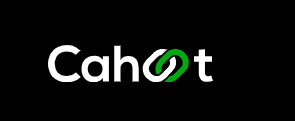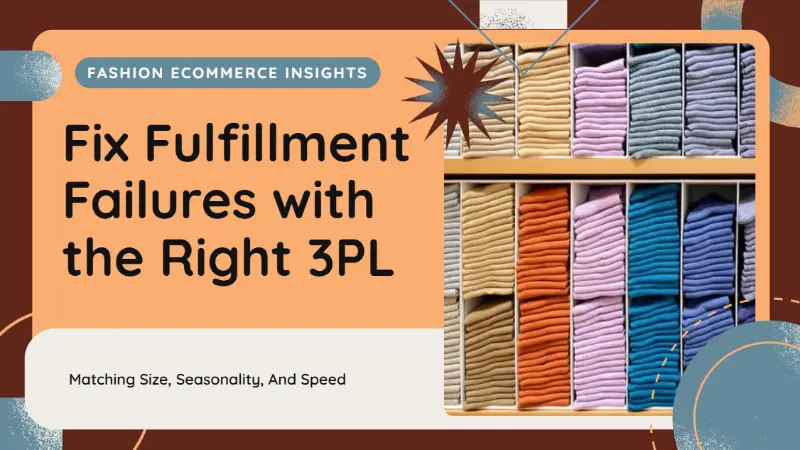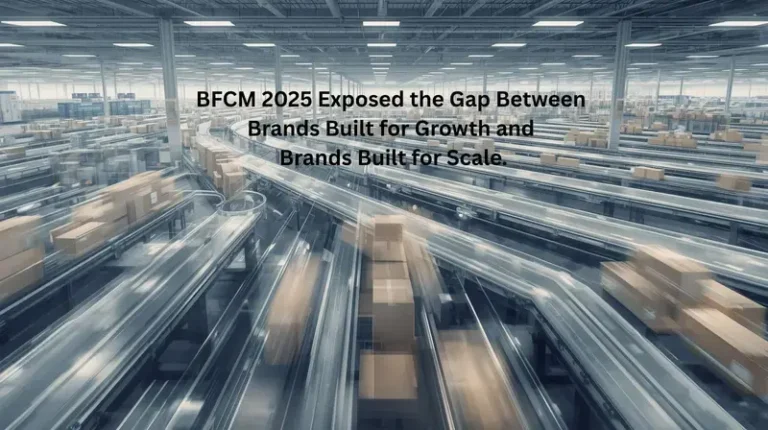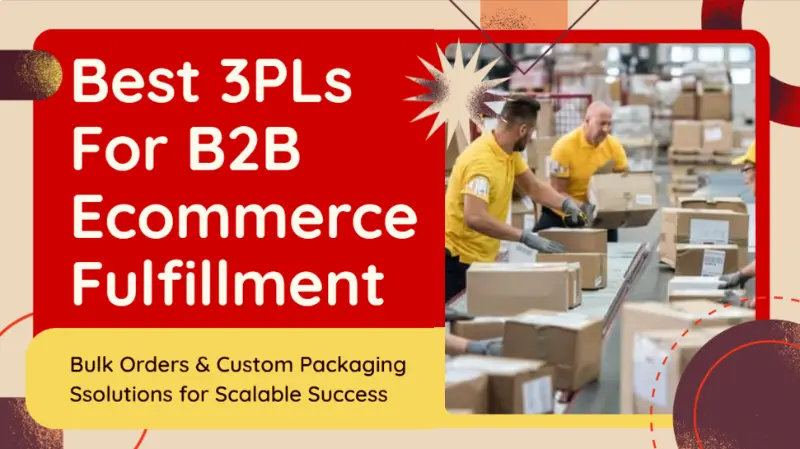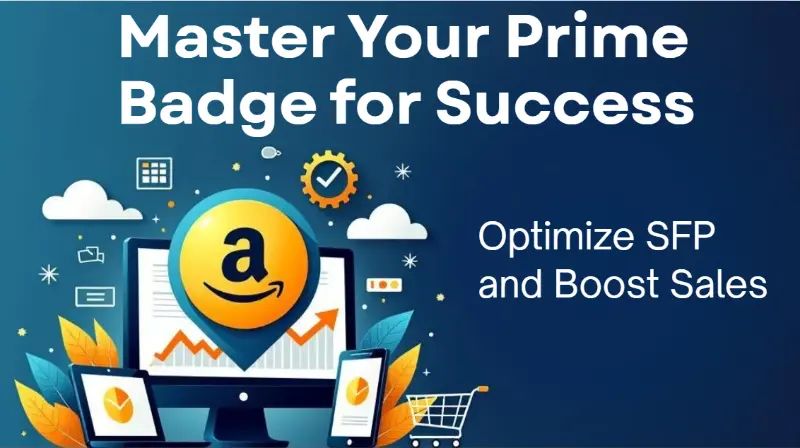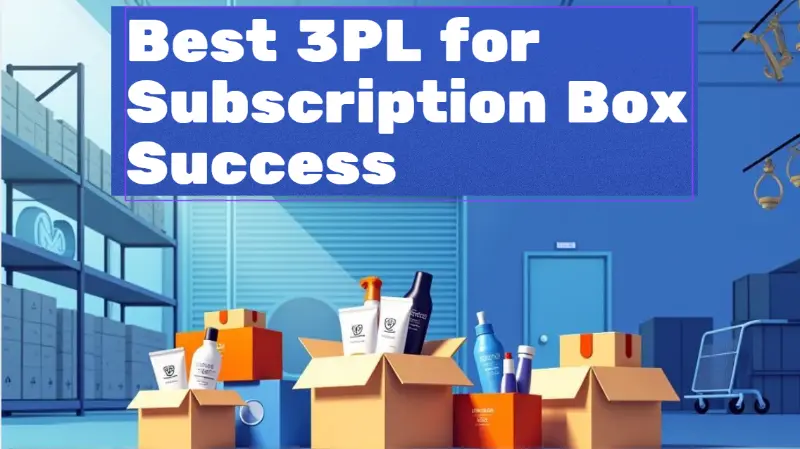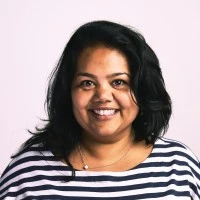Choosing a Fashion Ecommerce 3PL: Matching Size, Speed, And Seasonality
In this article
 11 minutes
11 minutes
- Introduction to Fashion Ecommerce
- The Fashion Reality Check for Fashion Brands
- Size, Seasonality, And Speed Drive Everything
- Technology in Fashion Ecommerce
- Returns Decide Your Margin
- Personalization in Fashion Ecommerce
- Twelve Questions I Ask In Every Fashion 3PL RFP
- Omnichannel Makes Or Breaks The Experience
- Sustainability And Packaging Without The Eye Roll
- Statistics and Trends
- What I Would Implement This Quarter
- Future of Fashion Ecommerce
- The Bottom Line
- Frequently Asked Questions
The fashion ecommerce industry has seen rapid growth, driven by technological advancements and innovative website experiences that help brands stand out in a highly competitive market. For fashion ecommerce sites, a clean design and intuitive navigation are essential to provide a seamless user experience and ensure that products and content stand out effectively. The global apparel market, encompassing both new and resale clothing, continues to expand, making fulfillment challenges even more critical for brands seeking to meet evolving consumer preferences. The rise of online shopping as the primary method for purchasing clothing and accessories has further accelerated these changes, increasing the pressure on brands to deliver seamless fulfillment experiences. But fashion ecommerce fulfillment is one of the hardest challenges in the industry. A wide range of ecommerce sites, from large marketplaces to niche platforms, play an essential role in the ecommerce landscape for fashion brands, driving growth and innovation. SKUs explode, size curves spike, returns flood, and every delay shows up on Instagram. The right 3PL can feel like oxygen. The wrong one eats your gross margin and your weekend. Here is how I evaluate a fashion ecommerce 3PL so brands keep speed, quality, and identity, and help your site stand out in the crowded fashion ecommerce space, without burning cash.
Slash Your Fulfillment Costs by Up to 30%
Cut shipping expenses by 30% and boost profit with Cahoot's AI-optimized fulfillment services and modern tech —no overheads and no humans required!
I'm Interested in Saving Time and MoneyIntroduction to Fashion Ecommerce
The fashion ecommerce industry is experiencing unprecedented growth, with the global ecommerce fashion market projected to soar to $1.6 trillion by 2030. Fashion brands and retailers are harnessing the power of ecommerce platforms to reach more customers than ever before, transforming the way people shop for clothing and apparel. In this highly competitive fashion ecommerce space, clothing brands and apparel brands are constantly innovating to capture the attention of today’s shoppers. The rapid growth of ecommerce fashion has made it essential for fashion retailers to create seamless omnichannel experiences, allowing customers to shop effortlessly across both digital and physical channels. Leading brands like ASOS and Zalando have set the standard, showing how a strong online presence and integrated shopping experiences can help brands stay ahead in the evolving world of fashion ecommerce.
The Fashion Reality Check for Fashion Brands
Fashion ecommerce is huge and still growing, driven by evolving trends in technology, consumer preferences, and social media influence. US online apparel is expected to pass two hundred billion dollars in 2025, with double-digit growth in some segments as consumers increasingly seek convenience, sustainability, and personalized experiences. The ecommerce fashion market continues to expand rapidly, reflecting significant shifts in market size and growth. Asia represents the largest market for fashion ecommerce, with apparel as the leading segment. To capture market share, it is crucial to position your business as a fashion brand or fashion retailer, leveraging industry-specific strategies and identity. Returns remain stubbornly high compared to other categories and are notably higher than in other industries, especially when customers bracket sizes, impacting overall purchases and sales performance. This is why your fulfillment partner matters more than ever. You need a team that speaks fashion, not just generic pick and pack.
Size, Seasonality, And Speed Drive Everything
1. Size curves and presentation: A good apparel 3PL understands that a small is not a small across brands, especially when handling clothing as the primary product type. You need allocation logic by size curve, clean folding, bagging, and, where required, garment-on-hanger for delicate pieces. Folding that shaves DIM weight without creasing is money in the bank. Different product categories, such as shoes and accessories, require tailored fulfillment approaches to ensure proper storage, packaging, and presentation. Incorporating a minimalist aesthetic in packaging and product presentation can enhance the unboxing experience and reinforce your brand identity. Additionally, ensure that product presentation and packaging are optimized for shoppers browsing on smaller screens, so visuals and information remain clear and appealing on mobile devices.
2. Seasonality and surge planning: Apparel is peaky. Capsules drop, promos hit, holidays spike. If the 3PL cannot staff quickly around those waves or pre-build kits for bundles, orders age and reviews tank. Ask for historical throughput and how they flex labor without sacrificing error rate.
3. Speed without chaos: Offering two-day or next-day selectively in key regions boosts conversion, but only if your 3PL has the nodes and the cutoffs. I like partners that show cutoffs by carrier and zip cluster on a simple board so ops can course correct daily. Quick delivery options can also encourage impulse purchases among online shoppers, driving additional sales through spontaneous buying decisions.
Technology in Fashion Ecommerce
Technology is at the heart of the modern fashion ecommerce industry, empowering brands to deliver personalized and engaging online shopping experiences. Fashion ecommerce websites are leveraging artificial intelligence (AI) and machine learning (ML) to provide tailored product recommendations, boosting customer engagement and driving more purchases. Social commerce and mobile commerce are also taking center stage, as shoppers increasingly use social media platforms and mobile devices to discover and buy the latest styles. Brands like Gymshark and Patagonia have embraced these trends, integrating social media and mobile commerce into their ecommerce strategies to connect with customers where they spend the most time. By adopting these technologies, fashion brands can create user-friendly websites that inspire shopping and make it easy for customers to find and purchase their favorite products.
Looking for a New 3PL? Start with this Free RFP Template
Cut weeks off your selection process. Avoid pitfalls. Get the only 3PL RFP checklist built for ecommerce brands, absolutely free.
Get My Free 3PL RFPReturns Decide Your Margin
Fashion returns can hit one in five orders or more. That makes reverse logistics your unglamorous superpower. Efficient returns processing is crucial for optimizing the customer’s purchase journey. When returns are handled quickly and smoothly, it encourages repeat purchases and builds loyalty. After a customer has purchased, targeted marketing and personalized product recommendations can further engage them, increasing retention and driving additional sales. The 3PL should process returns fast, grade condition accurately, steam or rebag where needed, and restock within forty-eight hours so you recover revenue and avoid contributing to landfill. I also want item-level defect codes so merchandising can kill or rework problem SKUs instead of arguing about vibes.
Personalization in Fashion Ecommerce
Personalization has become a cornerstone of success in the fashion ecommerce industry, as shoppers expect a unique and tailored experience every time they shop online. Fashion brands are using customer data and analytics to deliver personalized product recommendations, styling tips, and exclusive promotions, all of which contribute to a cohesive brand experience that fosters customer loyalty. By leveraging user-generated content (UGC) and social proof, brands can build trust and create a sense of community among their customers. For example, brands like Reformation and Nasty Gal have successfully used UGC and social proof to engage shoppers and encourage repeat purchases. Creating a personalized shopping journey not only enhances customer satisfaction but also helps fashion brands stand out in a crowded ecommerce market.
Twelve Questions I Ask In Every Fashion 3PL RFP
- What are your apparel-specific SLAs for on-time ship, order accuracy, and return cycle time?
- Do you support GOH, flat fold, size tagging, and value-add like hemming or steaming?
- How do you plan labor for drops and promos, and what is your peak error rate history?
- What is your average return-to-stock time by category?
- How do you minimize DIM weight for knits versus structured pieces?
- Can you integrate with my ecommerce platform, marketplaces, and store systems for omnichannel and leverage customer data for improved fulfillment and analytics?
- How do you support the creation and management of detailed product pages, including features like size guides, styling recommendations, and customer reviews?
- What are your east and west cutoffs by carrier, including Saturday and local courier options?
- How do you protect brand identity in packaging when you run multiple brands?
- What happens when a carrier lane degrades? Show me your playbook.
- How do you measure and reduce repeat returners and wardrobing abuse?
- Can your 3PL support personalized recommendations and product recommendations by utilizing customer data to enhance the shopping experience and drive engagement?
Omnichannel Makes Or Breaks The Experience
Most fashion brands need more than shipping from a warehouse. Seamless omnichannel experiences are now essential for fashion ecommerce brands, ensuring customers enjoy a consistent journey across all channels. Shopping online has become the preferred method for many consumers, making it essential for online retailers to provide consistent service across all channels. Store pickup and store returns, as well as shop pickup and shop returns, are standard now and serve as key touchpoints in the omnichannel journey. Your 3PL should push inventory to the right node, feed stores and shops with accurate availability, and support buy online, return in store or shop if that is part of your model. Customers feel the seams when this is bolted on. They reward brands that make it smooth.
Sustainability And Packaging Without The Eye Roll
Fashion audiences care about footprint, but they also care about unboxing. Offering a wide selection of sustainable packaging options can appeal to eco-conscious consumers and help differentiate your brand. Sustainable packaging solutions are especially appealing to consumers with modern lifestyles, who value convenience and eco-friendly choices. Your 3PL should offer recycled bags, right-sized boxes, and branded touches that are affordable. If the packaging team can swap components quickly, you can run tests without blowing up costs.
Statistics and Trends
The fashion ecommerce industry is shaped by powerful trends and compelling statistics. Mobile commerce now dominates, with 62% of fashion ecommerce transactions taking place on mobile devices, underscoring the need for mobile-optimized shopping experiences. Social commerce is also on the rise, with sales expected to surpass $1 trillion by 2028, highlighting the growing influence of social media on how consumers discover and purchase fashion. Sustainability is another key trend, as 72% of US consumers are now aware of environmental issues in the fashion industry and are seeking out eco-friendly and sustainable products. Major brands like H&M and Zara are responding by launching sustainable fashion lines and adopting greener practices throughout their supply chains. These trends are reshaping the ecommerce landscape, pushing brands to innovate and adapt to meet the evolving demands of today’s consumers.
What I Would Implement This Quarter
- A returns dashboard that shows restock speed, resale recovery, and reason codes by SKU, with push notifications to alert teams or customers about restock status.
- A size curve allocator that keeps the most popular sizes in the fastest nodes.
- A weekly lane review that compares ETA promises to actuals and flips carriers when needed.
- A clear rule for free returns by cohort, so you are generous for high LTV, firm with chronic abusers.
- A feature that showcases customer photos and styling tips to attract and engage potential buyers.
Scale Faster with the World’s First Peer-to-Peer Fulfillment Network
Tap into a nationwide network of high-performance partner warehouses — expand capacity, cut shipping costs, and reach customers 1–2 days faster.
Explore Fulfillment NetworkFuture of Fashion Ecommerce
Looking ahead, the future of fashion ecommerce is bright and full of opportunity. Fashion brands and retailers will need to stay ahead by embracing new technologies such as augmented reality (AR) and virtual reality (VR), which can create immersive and interactive online shopping experiences that captivate customers. As online shopping continues to evolve, brands must also prioritize sustainability and social responsibility, responding to consumers’ growing concerns about the environmental and social impact of their purchases. By leveraging these trends and technologies, fashion ecommerce brands can create engaging, future-ready shopping experiences that attract new audiences and build lasting customer relationships. Luxury brands like Gucci and Prada are already experimenting with AR and VR, setting the stage for the next wave of innovation in the fashion ecommerce industry. To stay competitive, brands must continue to innovate, adapt, and put the customer at the center of every shopping experience.
The Bottom Line
Fashion ecommerce is unforgiving, but not impossible. The right 3PL can provide a competitive edge in the market by optimizing fulfillment processes that help build trust and foster customer loyalty. Choose a 3PL that treats size curves, returns, and cutoffs like first-class citizens. Get the details right, and you will feel it in conversion, reviews, and cash. Miss them, and you are paying customers to leave.
Frequently Asked Questions
What Makes A 3PL Truly Fashion Ready?
Apparel-specific processes like GOH (Garment-On-Hanger), expert folding, rapid returns refurbishment, and size curve-aware allocation. Plus, real cutoffs and carrier agility.
How Fast Should A 3PL Process Returns?
Aim for forty-eight hours from receipt to restock with clear grading. Faster restock equals recovered revenue and fewer out-of-stock moments.
What Is The Right Speed Promise For Fashion Ecommerce?
Offer fast shipping selectively in regions where you can reliably hit the promise. Accuracy beats bravado every time.
How Do I Control Shipping Costs For Bulky Apparel?
Engineer packaging to drop DIM weight, pre-kit bundles, and route heavy items to the closest node. Carriers reward density and precision.
What 3PL Metrics Should We Watch Weekly?
On-time ship, order accuracy, return cycle time, restock recovery rate, and carrier lane performance. If those trend green, margin follows.
Turn Returns Into New Revenue
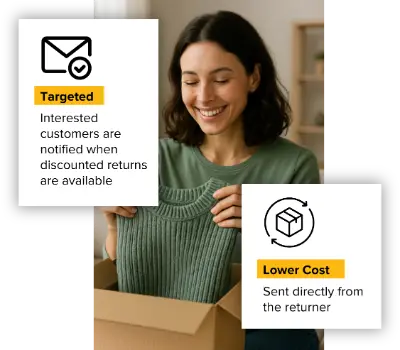
B2B Ecommerce Fulfillment: How 3PLs Deliver Bulk Orders & Custom Packaging
Most people think ecommerce fulfillment is about one box, one customer. B2B stands for business-to-business, and B2B ecommerce fulfillment refers to transactions between one business and another. B2B ecommerce fulfillment flips that script; now it’s pallets, custom packaging, multi-SKU coordination, and one order worth tens of thousands of dollars. The key difference between B2B and B2C fulfillment is that B2B involves more complex, customized logistics, while B2C is more standardized. If you treat that like a B2C shipment at scale, you’re setting yourself up for disaster.
Here’s the reality: B2B fulfillment isn’t harder because it’s “bigger.” It’s harder because the stakes are higher; relationships, service levels, and reputational risk hinge on every single shipment. B2B ecommerce fulfillment is a multifaceted process involving complex logistics, inventory management, and order handling. So let’s talk about how 3PLs that know what they’re doing handle bulk orders, custom packaging, and why it matters for your business growth.
Why B2B Ecommerce Fulfillment Is a Different Beast
B2B fulfillment isn’t just “more volume.” Unlike B2C, B2B fulfillment involves transactions between other businesses rather than individual consumers. Here are the key differences between B2B and B2C fulfillment:
- Bulk orders with complexity: Multiple SKUs per order, different pack-out requirements, and scheduled delivery windows. Miss one spec, and you’re issuing credits or losing a contract.
- Custom packaging for business clients: These aren’t unboxing videos; these are brand impressions for their customers. B2B fulfillment is tailored to the specific business needs of clients. Botch the branding, and you look unprofessional to their buyers.
- Strict service-level agreements (SLAs): On-time and accurate aren’t suggestions; they’re contractual. B2B fulfillment often involves shipments to retail stores or business locations, unlike B2C, which serves individual consumers. One missed SLA could mean financial penalties or worse.
- Integration with business systems: You’re not emailing updates; you’re syncing with EDI, ERPs, and procurement platforms.
A third-party logistics provider (3PL) must be built for this complexity, or you’ll end up firefighting every month.
Slash Your Fulfillment Costs by Up to 30%
Cut shipping expenses by 30% and boost profit with Cahoot's AI-optimized fulfillment services and modern tech —no overheads and no humans required!
I'm Interested in Saving Time and MoneyHow 3PLs Handle Bulk Orders Without Dropping the Ball
1) Advanced Order Management
Top-tier B2B fulfillment partners use order management systems designed for business clients, emphasizing efficient management to meet the complex needs of B2B order fulfillment:
- Aggregate multi-line orders accurately and manage orders efficiently through a centralized dashboard.
- Allocate inventory across fulfillment centers with precision.
- Flag exceptions early, before they become missed SLAs, to minimize errors in the fulfillment process.
2) Dedicated Account Management
B2B relationships live and die on communication. The best 3PLs:
- Provide a dedicated account manager who knows your business inside and out.
- Offer proactive updates on order statuses, potential delays, and performance metrics.
- Escalate issues before they hit the customer’s desk.
3) Bulk Handling Expertise
Bulk isn’t just “more boxes.” It’s about handling wholesale orders with specialized bulk handling expertise, including:
- Pallet optimization: stacking configurations to minimize freight costs and damage risk.
- Kitting and assembly: pre-building kits for business promotions or seasonal needs, these are value-added services that 3PLs offer to enhance supply chain operations.
- Labeling precision: adhering to retail or distributor compliance requirements, GS1 labels, ASN accuracy (Advance Shipping Notice), and meeting the specific packaging and shipping protocols required by big box stores.
4) Custom Packaging Done Right
Custom packaging isn’t fluff; it’s a B2B competitive advantage:
- Reflects your client’s branding standards exactly and can be tailored to customer preferences for branding and presentation.
- Supports sustainability mandates (eco-friendly materials, minimal waste).
- Adjusts quickly to changes, new designs, temporary campaigns, or client-specific configurations.
5) Inventory Visibility & Control
B2B clients need real-time visibility into stock levels and order statuses, making advanced inventory management systems essential for efficient operations. Modern 3PLs deliver:
- Live dashboards: with stock, order progress, fulfillment KPIs, and real-time monitoring of inventory levels.
- Automated replenishment alerts: preventing stockouts and missed POs.
- Analytics: so you can forecast demand, optimize inventory investment, and prevent supply chain disruptions by identifying risks early.
How Businesses Should Prepare for B2B Fulfillment Success
Even with a great 3PL, your success depends on how you partner. Building a successful partnership with your 3PL is essential for smooth logistics operations and long-term growth:
- Share accurate forecasts and upcoming campaign details early.
- Standardize product data, labeling, and packaging specs.
- Build strong relationships with your account manager, treat them like a fulfillment partner and an extension of your team.
- Audit your 3PL’s operational excellence: error rates, on-time performance, and compliance metrics to ensure you have chosen the right fulfillment provider for your business.
- Remember, effective partnerships are key to empowering businesses to focus on growth and core operations.
Real-World Example: When It All Clicks
A mid-sized skincare brand, operating as an ecommerce business, scaled to major retail partners by leveraging a 3PL that:
- Integrated with their ERP for seamless order flow.
- Provided expertise in b2b order fulfillment for ecommerce businesses, handling bulk seasonal launches with custom display packaging.
- Maintained 99.95% on-time fulfillment across 4,000+ monthly B2B orders.
- Result: fewer chargebacks, happier retail partners, and a stronger bottom line.
Looking for a New 3PL? Start with this Free RFP Template
Cut weeks off your selection process. Avoid pitfalls. Get the only 3PL RFP checklist built for ecommerce brands, absolutely free.
Get My Free 3PL RFPWhat To Do Next
- Review your current fulfillment SLAs; are they being met consistently?
- Ask your 3PL how they handle custom packaging changes mid-campaign.
- Demand real-time inventory visibility if you don’t have it already.
- Run a mock bulk order audit, track how long it takes from receipt to ship, and whether it hits compliance standards.
- Review your 3PL’s service offerings and whether they provide a comprehensive suite of solutions, including returns management, kitting, and custom packaging. For a structured process, see the RFP Template for 3PL Partner Evaluation.
- Evaluate the 3PL’s technological capabilities and their ability to provide seamless integration with your ecommerce platform for real-time data exchange, order tracking, and inventory management.
The Bottom Line
B2B ecommerce fulfillment is where logistics meets reputation, supporting sustainable growth and operational efficiency for your business. Bulk orders, custom packaging, and high-stakes SLAs demand a level of precision most B2C-focused providers can’t match. Partnering with a specialized 3PL offers numerous benefits, including cost efficiencies through freight consolidation and exceptional service that meets the unique demands of B2B buyers. Choose the right partner, and you’ll not only meet expectations, you’ll turn fulfillment into a competitive weapon that drives higher customer satisfaction.
Frequently Asked Questions
How Is B2B Ecommerce Fulfillment Different from B2C?
B2B involves bulk shipments, strict SLAs, custom packaging, and system integrations like EDI. The key difference between B2B and business-to-consumer (B2C) fulfillment is that B2B focuses on bulk shipments to other businesses, while B2C serves individual consumers with individual orders. B2C fulfillment often deals with unpredictable demand, requiring flexible logistics to meet the needs of individual consumers. The key differences between these two models include order size, demand patterns, shipping methods, and customer expectations. It’s less about one-off orders and more about reliability and compliance at scale.
Why Is Custom Packaging Important in B2B?
It ensures your brand (or your client’s brand) meets professional presentation standards and compliance requirements, which can directly impact client retention and satisfaction. Many fulfillment services include custom packaging as part of their service offerings, allowing businesses to enhance their brand image and meet specific B2B requirements through their chosen fulfillment service.
What Metrics Should I Monitor for B2B Fulfillment?
Key metrics include on-time delivery rate, order accuracy, error rate per line item, and compliance adherence for packaging and labeling. Additionally, monitoring supply chain metrics is essential to ensure resilience and efficiency. It’s important to track potential supply chain disruptions, as well as analyze market trends and future trends, to anticipate changes and adapt your strategies accordingly.
Do I Need a Dedicated Account Manager?
Yes. Complex accounts require a single point of contact to coordinate logistics, handle escalations, and maintain proactive communication. A dedicated account manager also helps streamline processes, improving fulfillment efficiency and ensuring smoother operations.
How Do I Choose the Right 3PL for B2B Ecommerce?
Look for experience with bulk orders, proven SLA adherence, real-time inventory visibility, and strong references from other B2B clients. Evaluate fulfillment providers and the fulfillment company’s track record in handling complex B2B logistics. It’s important to choose a fulfillment provider that can efficiently serve the receiving business and other businesses, ensuring fast, accurate shipping and meeting the unique needs of B2B operations.

Turn Returns Into New Revenue

Amazon Prime Badge: How Sellers Can Optimize SFP Performance in 2025
In this article
 7 minutes
7 minutes
Seller Fulfilled Prime sounds like freedom on paper, but in reality, it’s THE toughest performance program in ecommerce. In 2025, keeping the Amazon Prime badge is a high-wire act; one late order, one canceled shipment, and the entire badge (and Buy Box visibility with it) can vanish. For Amazon sellers, the Prime badge isn’t just a logo; it’s shorthand for trust, speed, and credibility with millions of Prime customers. And Amazon enforces it with razor-sharp precision.
At Cahoot, we see every day how hard it is for sellers to balance those requirements while protecting margins. That’s why it’s worth breaking down what SFP performance really means today, the exact metrics Amazon is tracking, and how smart systems and strategies, not guesswork, are the only way to protect that coveted blue badge.
Why Seller Fulfilled Prime Badge Matters, and Why It’s Tougher in 2025
Prime customers are the holy grail: they convert higher, shop more often, and tolerate almost zero friction. Earning the Prime badge leads to higher sales due to increased visibility and trust among Prime members. Losing your Prime badge means your buy-box performance tanks, and your visibility plummets. In 2025, Amazon is watching you like a hawk: on-time delivery > 93.5%, cancel rate < 0.5%, and a lightning-fast response when a rare issue happens. Maintaining Prime eligibility and Prime status requires consistently meeting these key performance metrics to keep your products available to Prime members.
Here’s the kicker: supply chain disruptions linger, carrier delays still happen, and rate complexity trips sellers up. Amazon has seen Prime delivery complaints surge in early 2025, so they’re policing Seller Fulfilled Prime with more bots and automated reviews. To ensure customer satisfaction and provide excellent customer service, sellers must meet Prime members’ expectations for fast, reliable Prime shipping and quick issue resolution to retain the badge.
Slash Your Fulfillment Costs by Up to 30%
Cut shipping expenses by 30% and boost profit with Cahoot's AI-optimized fulfillment services and modern tech —no overheads and no humans required!
I'm Interested in Saving Time and MoneyThe Exact SFP Metrics That Make or Break You
Amazon mandates: new 2024 shipping and delivery policies
- On-Time Delivery Rate (OTD): ≥ 93.5% – Ship late, and your badge gets flagged.
- Valid Tracking Rate (VTR): ≥ 99% – missing or late tracking? End of story.
- Pre-Fulfillment Cancel Rate: ≤ 0.5% – every cancel hurts.
- Strict one- and two-day delivery promises across 48 states
- Minimum Product Detail Page Views by product size tier
- 100 minimum shipments per month to even qualify
To qualify for SFP, sellers must have a professional selling account and successfully complete the official trial period, meeting all required metrics.
Note: all across 30-day rolling windows. One bad quarter, and you’re up for manual review, or worse, auto-suspension. Managing shipping costs is also crucial for maintaining compliance with SFP requirements.
How to Nail SFP Performance (Even With Small Team or Lean Ops)
1) Build Speed into Ops, Not Hype
- Batch-pick orders early. Always aim to pack and hand off by midday, not the end of the day, to meet Prime’s fast standards for speedy delivery and fast and reliable shipping.
- Use shipping APIs that auto-prioritize Prime lanes without manual toggles to help ensure reliable shipping practices.
- Monitor ETA cutoffs for your regular carriers and test express backups, as reliable shipping is critical for meeting Amazon’s expectations.
2) Over-Deliver on Tracking
- Auto-push tracking as soon as the label prints.
- Validate tracking format before upload; Amazon bots punish malformed data.
- If your carrier is flaky, add a second provider or backup (especially for rural destinations).
- Implement real-time inventory tracking to ensure accurate order fulfillment and prevent stockouts.
- Monitor customer feedback related to shipping and tracking to quickly identify and resolve any issues.
3) Prevent Cancels like a CEO
- Never “hope it lands.” Hope is not a strategy. Use buffer stock, or auto-route to FBA if you’re under threat.
- Effective inventory management is crucial; monitor your storage space closely to ensure you have enough stock on hand and avoid last-minute cancellations.
- Understanding product category-specific risks can help you anticipate demand fluctuations and prevent stockouts that lead to cancellations.
- If a stock issue comes up, cancel proactively before the SFP badge gets flagged, and contact buyers where possible.
- Watch the “future release risk”; don’t oversell what isn’t in your warehouse yet.
4) Fix Defects Fast
- Set alerts for negative feedback or A-to-Z claims. Address and refund within 24 hours.
- Promptly address customer service inquiries to ensure customer satisfaction and resolve issues before they escalate.
- Monitor customer messages daily and respond within minutes.
- Providing excellent customer service is key to resolving defects and maintaining Prime eligibility.
- If a product causes repeated issues, pause SFP listings on it until the root cause is solved.
5) Use Tools That Ready Your Stack
- Dashboards like Cahoot’s surface SFP metrics in real time, flag at-risk orders, and suggest next actions. Leveraging real-time inventory tracking tools within your fulfillment process helps monitor stock levels, avoid stockouts, and ensure efficient order fulfillment.
- Automate reporting: have OTD, VTR, and cancel funnel dashboards you can glance at before Amazon does. Staying ahead in the competitive landscape requires continuous monitoring and adjustment of your SFP strategies to respond to changes and maintain high performance.
Stretch Goals That Keep You Ahead of the Curve
- Test local courier options in high-risk ZIP codes for same-day assurance.
- Stagger dispatch so that slow zones don’t pile up late-hand opening issues.
- Return workflows: quick pickups with prepaid labels reduce returns drag on ODR.
- Seasonal boosts: plan staff and carrier guarantees for Prime Day and holiday surges.
- Leverage exclusive deals and prime offers during events like Prime Day to boost sales and attract Prime members with special discounts and fast shipping.
- Integrate other sales channels, such as your own website or external marketplaces, to expand reach and maximize SFP performance.
Looking for a New 3PL? Start with this Free RFP Template
Cut weeks off your selection process. Avoid pitfalls. Get the only 3PL RFP checklist built for ecommerce brands, absolutely free.
Get My Free 3PL RFPWhat To Do Monday Morning
- Pull your last 30 days of SFP performance. If any metric is close to thresholds, act immediately.
- Review real-time inventory tracking data to quickly identify potential stockouts or overstock issues.
- Evaluate your fulfillment process for efficiency, ensuring all steps from packing to shipping meet Amazon’s requirements.
- Monitor shipping fees closely to maintain profitability and consider strategies to reduce costs or offer free delivery where possible.
- Confirm courier ETA averages vs. Amazon cutoff times. Adjust the clock.
- Embrace the tool that automates tracking validation and alerts.
- Run test orders to rural areas to audit actual delivery performance.
The Bottom Line
Maintaining the Prime badge via SFP is no mystery, it’s detail and discipline wrapped in speed. The brands that nail it aren’t the fastest; they’re the most consistent. They protect margins because they built structural resilience, not wishful workflows. Be precise, proactive, and responsive, and your Prime badge remains your best badge.
Frequently Asked Questions
How fast must I ship to keep the Prime badge?
Ideally, same-or-next-day pickup with your carrier, aiming for delivery well before the customer sees a “slower shipping” estimate. Late shipments still count, regardless of holidays or weather. Buffer, even one-hour picks help.
What’s the easiest way to avoid tracking-related issues?
Use shipping tools that auto-validate tracking numbers, ensure they follow Amazon’s format, and auto-upload to Seller Central through API. Manual uploads always risk errors or mismatches.
My Amazon cancellation rate is high. How do I fix it?
Inventory buffer. Auto-route to FBA when stock dips. Or proactively cancel orders before they ship and offer a solution. One preventative cancel is better than badge loss.
What should I prioritize for SFP if I’m juggling orders and compliance?
OTD and Page Views. Those two metrics matter more than any other. If both are healthy, minor tracking glitches are usually forgiving.
Can I use multiple carriers for SFP?
Yes, and you probably should. Multi-carrier strategy protects against one carrier’s delays, system outages, or regional slowdowns. Just monitor all carrier performances vigorously.

Turn Returns Into New Revenue

Subscription Box Fulfillment Services: How to Scale with Reliable 3PL Solutions
In this article
 8 minutes
8 minutes
- What Makes Subscription Box Fulfillment Special
- What Subscription Commerce Logistics Must Deliver
- Real-World Scenarios Where Subscription Fulfillment Isn’t “Same as Ecommerce”
- What I’d Ask Before Signing with a 3PL For Subscription Fulfillment
- What You Can Implement Right Now
- The Bottom Line
- Frequently Asked Questions
I used to think fulfillment is fulfillment; until I helped a subscription business through a crash and burn because their 3PL treated “recurring shipment” like one-off orders. It wasn’t meager: wrong items, late boxes, branding mismatches. Cancelling subscriptions was faster than refunding half the month’s payments. Trust me, subscription box fulfillment services require a whole different playbook. Subscription box fulfillment demands a specialized fulfillment process designed to handle the unique needs of recurring shipments and ensure accuracy and consistency every cycle.
So let me walk you through the real-life, “don’t learn this the hard way” guide, how subscription commerce logistics differs, what recurring shipment 3PL solutions should offer, and how you keep customer loyalty at peak by consistently meeting or exceeding customer expectations, even when inventories wobble or your curation changes week to week.
What Makes Subscription Box Fulfillment Special
Subscription box fulfillment is not just sending parcels, it’s about rhythms and relationships:
- Recurring shipment expectations: Subscribers expect that box, every cycle, on a recurring basis. Miss it twice and you’re not a brand; you’re spam.
- Inventory choreography: You’re juggling curated kits, limited-run add-ons, and rolling replenishment. Managing inventory levels and stock levels is crucial; one SKU out of stock means a box looks incomplete (and customer loyalty cracks).
- Packaging equals brand identity: Those custom-branded packaging costs matter. A branded box is a key element that reinforces your brand identity. Miss the design or quality? It’s a crash to your reputation.
- Fulfillment visibility: You need real-time visibility so you can control expectations and de-escalate delays fast.
As your subscriber base grows, scaling fulfillment operations becomes essential to maintain service quality and customer satisfaction.
Slugging through all this yourself? That’s why you need subscription box fulfillment services that are tailored, not generic.
What Subscription Commerce Logistics Must Deliver
1) Predictable, Time-Sensitive Execution
A solid subscription fulfillment partner understands the tick-tock: you need pick-and-pack on day X, shipped on day Y, in customers’ hands on day Z. Even a 24-hour slip shrinks the window to delight. Timely deliveries and timely and accurate deliveries are crucial for customer satisfaction, as subscribers expect their products to arrive on schedule. Accurate deliveries are also essential to maintaining trust and retention.
They deal with buffer stock options, seasonal surges, and replenishment pulls without the chaos, efficiently managing order volume to ensure scalable solutions. You don’t get a “boys will be boys” excuse, just consistent flow.
2) Spot-On Inventory Management
Recurring orders mean forecast sensitivity. Look for 3PLs with real-time inventory tracking, robust warehouse management, and advanced systems that support low-stock alerts and auto-reorder thresholds for components, especially with curated subscription boxes that change each cycle. Advanced technology can further optimize inventory management and ensure accuracy throughout the fulfillment process. Leveraging data-driven insights also helps improve forecasting and inventory decisions.
You’ll retain customers when every box feels fresh and fully stocked, not “I’ll order again if and when they have everything.”
3) Branded and Custom Packaging That Doesn’t Hurt Your Margins
Subscription box fulfillment companies must marry design and cost control:
- Offer branded boxes, inner sleeves, stickers, filler, eco-friendly packaging materials, and custom boxes, but help you source them.
- Balance quality control so your boxes feel premium, but also let you tweak or swap designs mid-season, contributing to a memorable unboxing experience.
- And handle supply chain surprises, if your eco-friendly material runs out, they suggest equivalent substitutions, not “ship plain boxes.”
Creating a unique unboxing experience is essential for fostering customer loyalty and differentiating your brand.
4) Real-Time Tracking & Communication
One bad experience: a lovely unboxing disrupted by “shipment delayed” with no update. Your fulfillment provider must:
- Offer real-time tracking to your system and the customer’s inbox, including sharing order details for transparency.
- Push automated updates, and alert you proactively if one batch falls behind.
- Let your dashboard show you shipment progress and exceptions in seconds, as proactive communication is essential for meeting customer expectations.
5) Data-Driven Logistics to Improve Retention
Subscription isn’t set-it-and-forget-it. The smart fulfillment partners:
- Give you metrics on box fill rate, promise vs actual ship date, and inventory tracking, all of which are crucial for improving customer retention.
- Help you use that data to make informed decisions that reduce costs and improve efficiency: if custom packaging isn’t helping retention, redesign. If a certain kit item underperforms, swap it next cycle.
Leveraging data-driven logistics not only enhances performance but also helps lower operational costs for subscription box businesses.
Real-World Scenarios Where Subscription Fulfillment Isn’t “Same as Ecommerce”
- Curation pivot mid-cycle: You sell out of a featured item and need to substitute. For any subscription box business or subscription box service, this is a common challenge. Your 3PL handles the swap, updates customers, and reroutes without chaos.
- Sudden inventory shift: Your coffee subscription’s East Coast warehouse runs low on finished product due to a supplier delay. Instead of leaving orders unfilled, your fulfillment partner reallocates stock from your West Coast facility or another pre-approved partner site within their network. The order ships on time, inventory records stay accurate, and your customers never see a hiccup.
- Quality surprise: A season’s custom tissue paper arrives misprinted. A good provider tags, rejects, sources replacements, and keeps fulfillment on track, even while you redesign. Maintaining quality control in these situations is essential for protecting your brand reputation and the brand’s reputation.
What I’d Ask Before Signing with a 3PL For Subscription Fulfillment
When evaluating each fulfillment company, it’s important to understand how most fulfillment companies handle key issues like shipping costs, hidden costs, and their experience as a third-party logistics partner for subscription box businesses. Here are some essential questions to ask:
1. How do you handle recurring shipment scheduling’s effect on labor and box cuts?
2. What’s your inventory alert logic? Can it prevent the dreaded “out of stock surprise”?
3. Custom packaging: Can you swap designs mid-series without excess waste or cost spikes?
4. Dashboard and comms: are delays visible and notifications automated?
5. What data do you report on: fill rate, mispacks, customer feedback loops?
6. Are there any hidden costs or fees in your pricing structure?
7. How do you manage shipping cost and shipping costs, and do you offer strategies to minimize these expenses?
8. What is your experience as a third-party logistics partner specifically for subscription box businesses?
What You Can Implement Right Now
- Audit your current fulfillment workflow, time from pick to delivery versus brand loyalty threshold, and identify areas to save time and improve efficiency.
- Ask your 3PL how they measure on-time delivery % specifically for recurring orders.
- Demand custom packaging change flexibility (mini-runs, design swaps, samples).
- Set up real-time dashboard alerts for inventory dips during order processing.
- Run a quarterly “what if” box, simulate a substitution or shortage, and timeline the customer experience.
- Consider outsourcing fulfillment or choosing to outsource fulfillment to a specialized provider to scale efficiently and streamline operations.
The Bottom Line
Subscription box fulfillment isn’t “shipping”; it’s choreography, communication, brand experience, and retention economy. For subscription businesses, just “handling orders” isn’t enough: you need subscription fulfillment partners that think ahead, swap fast, and protect your brand every shipment. Effective subscription box fulfillment not only supports a reliable revenue stream but also helps build meaningful connections with your customers, fostering loyalty and long-term engagement.
Do fulfillment thoughtfully, and your IT system becomes invisible; your customer thinks “they’ve got me.” Screw it up, or do the same as B2C, and you just burn renewable revenue. These strategies are essential for any subscription service, subscription services, or ecommerce businesses looking to scale recurring revenue and stand out in a competitive market.
Frequently Asked Questions
How Is Subscription Box Fulfillment Different from One-Off Ecommerce?
Fulfillment services for subscription boxes manage recurring shipments, evolving inventory, and branded consistency across cycles, whereas traditional ecomm is more ad hoc and SKU-stable.
Are Branded Boxes Worth the Cost?
Absolutely. Custom packaging shapes brand perception. A memorable unboxing contributes to customer loyalty and justifies premium pricing, or helps prevent churn.
How Can I Ensure I Don’t Run Out of Critical Inventory?
Partner with a 3PL that offers real-time inventory alerts and auto-reorder thresholds. You should be alerted to low stock long before the last master case is opened, not after.
Can Packaging Designs Really Be Swapped Mid-Season?
Yes, good fulfillment centers support flexible packaging runs. Ask for ability to pilot new designs or move to fallback options without cost cliffs or downtime.
What Metrics Should I Track for Subscription Fulfillment Success?
Track on-time delivery rate, box fill accuracy, customer re-order rate, and return or complaint reasons. Weekly reporting on these helps shape product, design, and supply planning.

Turn Returns Into New Revenue

Amazon FBA Ends Prep Services: Alternatives & Seller Strategies
Amazon is pulling the plug on its FBA prep services, and the implications go deeper than a simple policy change. Starting January 1, 2026, Amazon FBA sellers will have to prep and label their inventory themselves (or pay someone else to do it). Amazon Fulfillment by Amazon (FBA) will no longer offer its optional prep services for items headed to its fulfillment centers, ending a program that many sellers quietly depended on. It’s a big shift for anyone used to sending products to Amazon and letting them handle item labeling, poly-bagging, bubble wrapping, and other prep tasks. At first, I was stunned. How convenient it was to have Amazon do those tedious FBA prep steps for a fee. But now Amazon says sellers have “significantly” improved their own packaging capabilities, and the vast majority handle prep themselves. Fair enough, but this move is going to have ripple effects across the entire supply chain and ecommerce business.
Slash Your Fulfillment Costs by Up to 30%
Cut shipping expenses by 30% and boost profit with Cahoot's AI-optimized fulfillment services and modern tech —no overheads and no humans required!
I'm Interested in Saving Time and MoneyWhy Amazon Is Dropping FBA Prep Services
Amazon originally launched its FBA prep service years ago to help sellers meet its stringent packaging requirements. If an item wasn’t properly packaged, say a fragile glass needed extra bubble wrap or a plush toy needed a polybag, Amazon would do it for a per-item fee and make sure it was up to FBA standards. The goal was to protect products during the shipping process and reduce delays or damage. Over time, Amazon trained us on how to meet its stringent requirements for things like suffocation labels and barcodes.
Now, Amazon claims, most sellers (and their suppliers) have gotten the memo. In Amazon’s own words, “We initially introduced prep services to help protect products… Since then, we’ve seen a significant improvement in seller packaging capabilities and a reduced need for our prep services.” They noted that the vast majority of sellers either do prep themselves, use their own manufacturing partners, or rely on third-party service providers like an FBA prep center.
Amazon also has a business incentive here. By eliminating these FBA services, they can streamline operations in their fulfillment network. Every minute a warehouse worker spends poly-bagging or stickering inventory units is a minute not spent shipping orders. Amazon explicitly said this change will let FBA focus on “faster and more efficient fulfillment center operations” and quicker deliveries for customers. In other words, they want to reduce any bottlenecks caused by seller inventory arriving in subpar condition.
I suspect Amazon also wasn’t making much profit on these prep fees, or the hidden fees were discouraging sellers from sending certain items. Plus, Amazon has been pushing programs like Ships in Product Packaging (SIPP) that encourage manufacturers to use ready-to-ship packaging (and even give FBA fee discounts for it) to lower prep needs. All of this aligns with Amazon’s broader goal: make sellers responsible for inventory prep so that inbound shipments check in faster and with less labor on Amazon’s side.
How This Impacts Sellers (Spoiler: It’s Big)
Make no mistake, this is a fulfillment game-changer for FBA sellers. If you’ve been leaning on Amazon’s item labeling services or bubble-wrapping at the fulfillment center, you now need a Plan B. One seller on the Amazon forums said the new policy will “crush them” because they don’t have a warehouse and used Amazon as their prep solution. I feel that pain; not every small seller has a spare garage (or staff) to perform prep on hundreds of units.
Without Amazon’s dedicated support teams handling prep, sellers must ensure proper prep before shipment or risk inventory being rejected. Amazon made it clear: come January 1, 2026, any FBA shipment created after that date must arrive prepped and labeled or it won’t be eligible for reimbursement if items get damaged or lost. They might even outright refuse the inventory at the warehouse if it’s not compliant. That means if you ship in products without a suffocation-warning polybag or missing barcode labels, you could be eating the cost of that inventory. Yikes.
The operational impact is huge on inventory management and timelines. Sellers will have to build in extra time and processes to get products prep-ready. For many sellers, that means working with a third-party prep service or fulfillment partner. It’s spawning a mini-industry of FBA prep companies ready to step in. The silver lining is that doing prep outside Amazon can be more cost-effective at scale—you can shop around for the best rates and avoid Amazon’s one-size-fits-all fees.
Amazon’s own prep fees weren’t cheap; for example, they might charge ~$1.30 per unit to bubble-wrap and label a fragile item. Those costs were often rolled into our overhead as hidden fees, hurting margins. Now, at least, you have control: either invest in in-house prep or negotiate with fulfillment companies that specialize in Amazon compliance.
There’s also an argument that this change encourages better overall inventory management. If we know Amazon won’t fix prep mistakes, you’ll need to be extra careful to prep products right the first time, meaning fewer delays, fewer returns processing headaches from damaged items, and less excess inventory sitting unsellable due to prep issues.
Looking for a New 3PL? Start with this Free RFP Template
Cut weeks off your selection process. Avoid pitfalls. Get the only 3PL RFP checklist built for ecommerce brands, absolutely free.
Get My Free 3PL RFPAdapting to a No-Prep FBA World
So, what are sellers to do? Many Cahoot clients are already treating this as a wake-up call to tighten up their operations. Here’s one possible game plan (and what I’d suggest to any Amazon seller):
- Audit Your Products: Identify SKUs relying on Amazon for prep. Fragile glassware, liquids, items needing polybags or labels are now your responsibility.
- Line Up a Prep Solution: Train your staff or vet a reliable 3PL/FBA prep service that can receive, inspect, label, polybag, and forward inventory.
- Leverage Manufacturers: Work with suppliers to package to Amazon specs during production—this saves time and cost.
- Use the SIPP Program: Eligible items with retail packaging suitable for shipping qualify for FBA fee discounts and skip additional prep.
- Don’t Forget Item Labeling: Ensure every unit has a correct FNSKU or barcode label before it leaves your hands.
A Mindset Shift
FBA is still awesome for scale and Prime eligibility, but this change reminds us not to put all our eggs in one basket. It might be a good time to diversify fulfillment models, maybe stock more units with a multi-channel fulfillment partner or your own warehouse for DTC fulfillment. In fact, at Cahoot, we’ve been helping sellers fulfill from a nationwide network of warehouses for fast direct-to-customer orders. Those same warehouses are FBA prep experts and can act as backup fulfillment for your Amazon store. The end of Amazon’s prep service is a headache, no doubt. But it’s also an opportunity to build a more resilient operation. You’ll save on those Amazon prep fees, gain more control over inventory quality, and possibly even speed up the supply chain.
It’s like graduating from Amazon’s training wheels—a bit wobbly at first, but ultimately empowering. If you start now, come January, you’ll have your shipping plan sorted with everything in proper packaging, ready to roll.
Scale Faster with the World’s First Peer-to-Peer Fulfillment Network
Tap into a nationwide network of high-performance partner warehouses — expand capacity, cut shipping costs, and reach customers 1–2 days faster.
Explore Fulfillment NetworkFrequently Asked Questions
What is an Amazon FBA prep service, and why was it initially introduced?
An Amazon FBA prep service handles packaging, polybagging, bubble wrap, and item labeling services so products are properly packaged for fulfillment by Amazon. Amazon initially introduced prep services to protect products, improve inventory management, and streamline efficient fulfillment center operations for Amazon sellers.
When will Amazon stop offering FBA prep services, and what does it mean for sellers?
Amazon will end prep services on January 1, 2026. Any FBA shipments created after this date must arrive fully compliant with Amazon’s stringent requirements. Amazon FBA sellers must handle proper prep before products are sent to Amazon fulfillment centers to avoid delays or rejections.
What are the best alternatives to Amazon’s FBA prep services?
Amazon sellers can work with a trusted FBA prep center, engage manufacturing partners for their own packaging, or use third-party service providers with a nationwide network to handle labeling services, returns processing, and prep needs in a cost-effective way.
How should inventory management change to handle the loss of FBA prep services?
Sellers should audit the entire inventory for eligible products requiring special packaging, document correct packaging steps for each SKU, and align fulfillment companies or manufacturing partners to ensure products are properly packaged before shipment.
What risks come with not meeting Amazon’s prep requirements?
Non-compliant FBA shipments may be refused or delayed, increasing storage fees, hurting Amazon sales, and risking account health. Using a fulfillment partner or FBA prep center can save time, reduce hidden fees, and ensure the shipping process meets Amazon’s requirements.

Turn Returns Into New Revenue

Why Slowing Growth Could Be Your Secret Competitive Advantage
In this article
 4 minutes
4 minutes
- Growth Is Down? Good. Now Let’s Talk.
- The Pause Is Where The Magic Happens
- What Smart Brands Are Doing During The Slowdown
- Chasing Better Instead Of More
- Why Now Is The Best Time To Reinvent Your Ops
- What We’re Seeing At Cahoot
- Final Thought: Use The Slow Season To Outsmart, Not Outspend
- Frequently Asked Questions
Growth Is Down? Good. Now Let’s Talk.
This might sound strange coming from someone who spends their days helping ecommerce brands grow faster, ship smarter, and compete with giants. But here it is:
Slowing growth isn’t always bad. In fact, sometimes it’s exactly what your brand needs.
It forces you to pay attention to stuff you were too busy to look at before. Broken ops. Cost sinks. Sketchy suppliers. Shaky unit economics. When you’re growing at all costs, this stuff hides in the background. But when things slow down? It all surfaces.
Right now, according to AlixPartners, we’re seeing one of the sharpest ecommerce spending slowdowns in a decade. Consumers are pulling back. Tariffs are throwing sand in the gears. The Shopify Index shows more store closures than installs for the first time in years. And if you’re feeling the heat, you’re not alone.
But here’s the thing: this slowdown could be your wake-up call or your unfair advantage. Depending on what you do with it.
The Pause Is Where The Magic Happens
Every founder I know has sprinted through phases of insane growth where “we’ll fix that later” becomes a mantra. But later rarely comes. Until it’s forced on you.
That’s where we are now. A lot of brands are quietly hitting the wall. Not because their products are bad. But because their ops can’t keep up with their ambition.
So if growth has stalled for you, try asking:
What would I fix if I weren’t constantly chasing more?
Slash Your Fulfillment Costs by Up to 30%
Cut shipping expenses by 30% and boost profit with Cahoot's AI-optimized fulfillment services and modern tech —no overheads and no humans required!
I'm Interested in Saving Time and MoneyStart there.
What Smart Brands Are Doing During The Slowdown
Here are a few moves I’m seeing from operators who aren’t just waiting it out:
- Rebuilding their supplier network; offshoring was fine when margins were fat, but now nearshoring and dual sourcing are saving cash and reducing risk
- Auditing packaging, because oversized boxes are silent profit killers
- Rebalancing inventory with better forecasting tools, instead of stockpiling and hoping
- Training teams instead of just hiring faster, focusing on repeatability and clarity
- Experimenting with fulfillment models (Cahoot-style distributed shipping, hybrid 3PL + self-fulfillment setups, or even zone-skipping trials)
In short: they’re fixing the things they ignored while things were working “well enough.”
Chasing Better Instead Of More
There’s this quiet revolution happening among founders who are done with the growth-at-all-costs treadmill. They’re not giving up on scale, they’re just being smarter about it.
It reminds me of a conversation I had recently with a brand that pulled back from seven channels to three. Their sales dipped 12% for the quarter… but margins rose 18%, CSAT jumped, and their returns dropped by a third. Turns out, doing fewer things better pays.
They told me, “We stopped chasing ‘more’, and started chasing better.”
That stuck with me.
Why Now Is The Best Time To Reinvent Your Ops
Because no one else is.
Everyone else is panicking. Slashing budgets. Blaming ads. Praying Meta’s new algo will swing things around.
If you take this pause and use it to re-architect your backend, supply chain, fulfillment, customer experience, and inventory cadence, you will exit stronger. Period.
This is where you gain margin that compounds. This is where you discover operational leverage. And this is how you get ready for volume before it returns.
What We’re Seeing At Cahoot
Some of the smartest brands we work with are using this moment to finally clean up the mess:
- Testing Cahoot’s peer-to-peer fulfillment to reduce shipping zones and cost per package
- Auditing their warehouse placement to lower delivery time without overspending on storage
- Automating order routing and splitting to serve customers faster with less ops overhead
It’s not sexy, but it works. One brand cut its average shipping cost by 22% without changing carriers. Just smarter routing and storage.
Looking for a New 3PL? Start with this Free RFP Template
Cut weeks off your selection process. Avoid pitfalls. Get the only 3PL RFP checklist built for ecommerce brands, absolutely free.
Get My Free 3PL RFPFinal Thought: Use The Slow Season To Outsmart, Not Outspend
If growth has slowed, don’t just ride it out. Don’t just “make it through.”
Use it.
This is your shot to fix the stuff that matters. The stuff that makes growth sustainable, not scary. Because when things rebound, and they will, you’ll be ready. Faster, leaner, stronger.
Pause on purpose. The smart ones always do.
Frequently Asked Questions
What should I do if my ecommerce growth stalls?
Use the pause to fix operations, audit inventory, vet suppliers, and improve fulfillment.
Why is slowing down a good thing for DTC brands?
It creates space to optimize backend systems and improve margins.
How are brands responding to the ecommerce slowdown?
They’re rethinking their supply chains, experimenting with fulfillment, and improving forecasting.
Is this a temporary slump or a long-term shift?
It’s likely a correction, but smart brands treat it as an opportunity to get leaner and stronger.
Can Cahoot help during a growth slowdown?
Yes, by optimizing fulfillment and reducing shipping costs, Cahoot helps brands improve ops even when volume dips.

Turn Returns Into New Revenue

